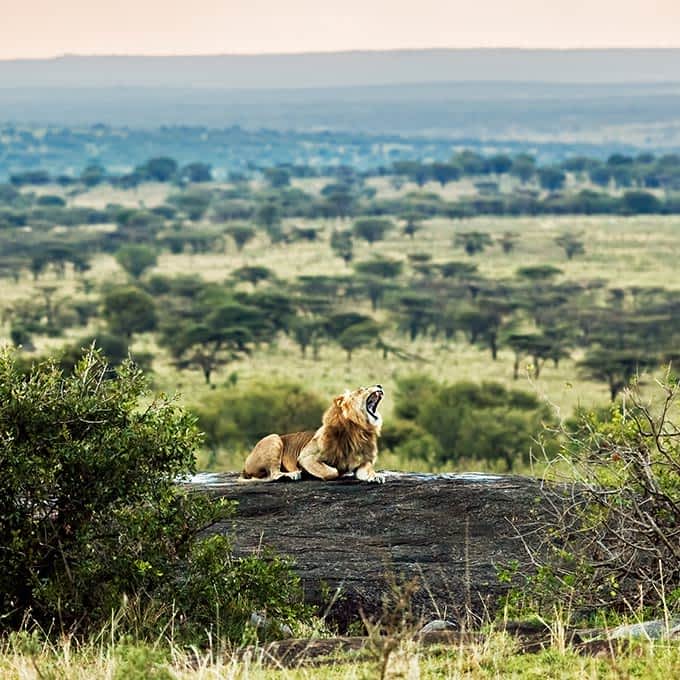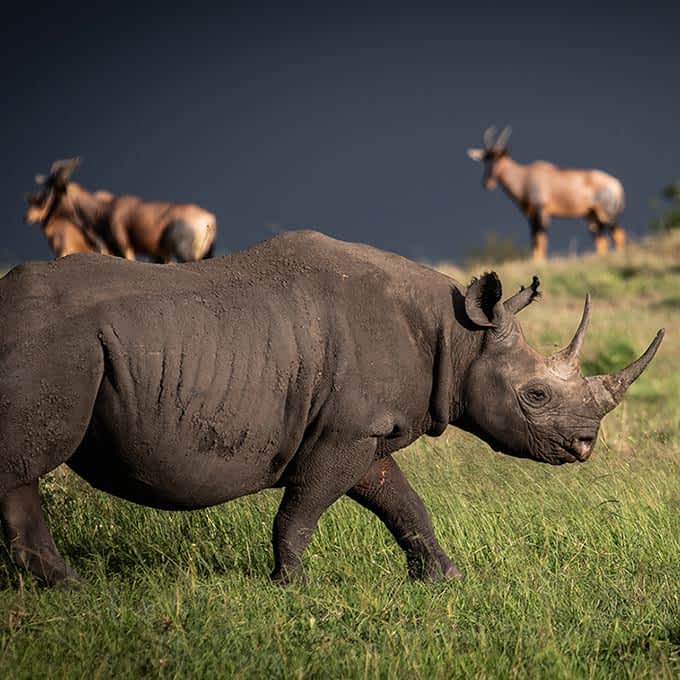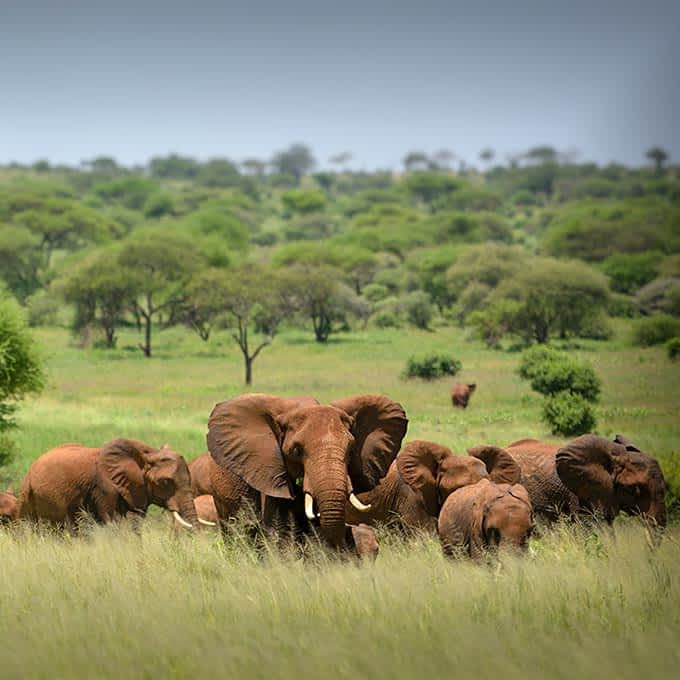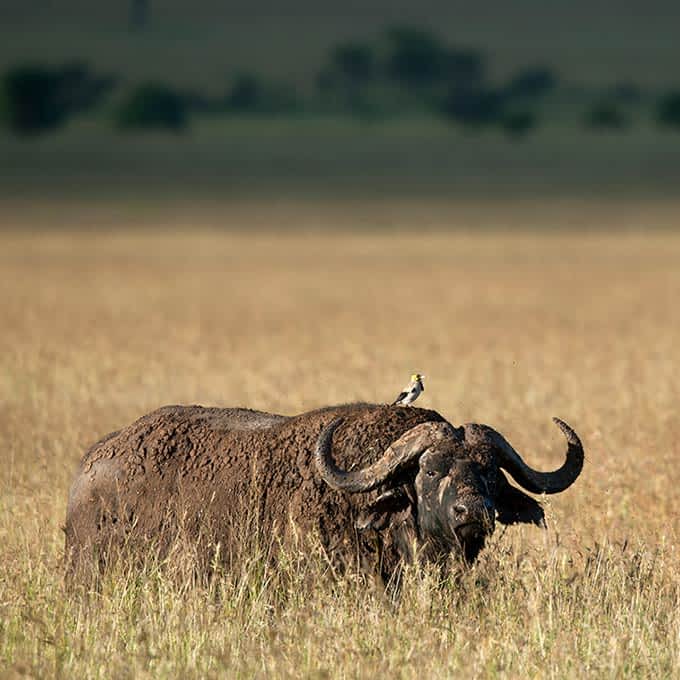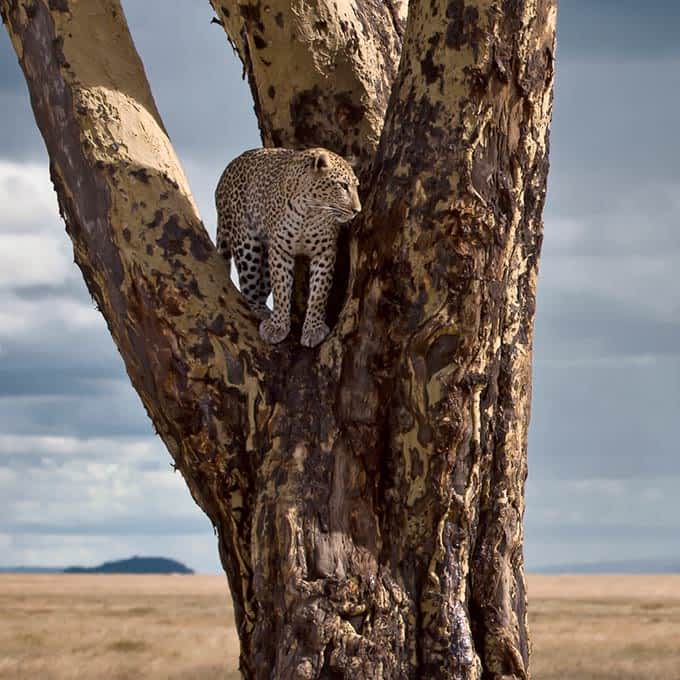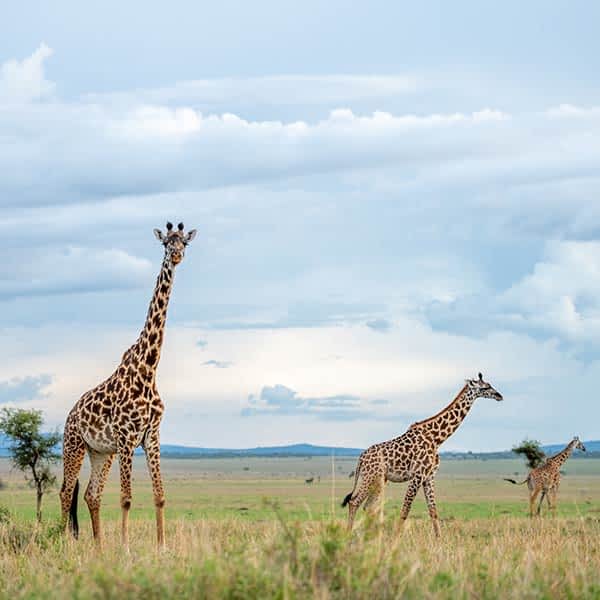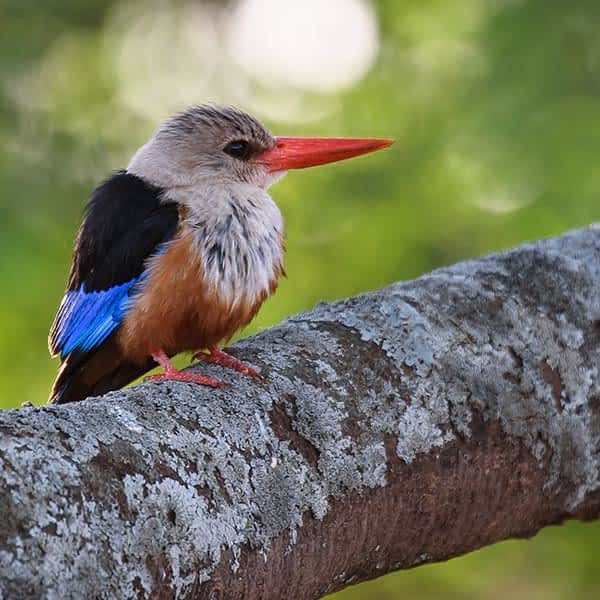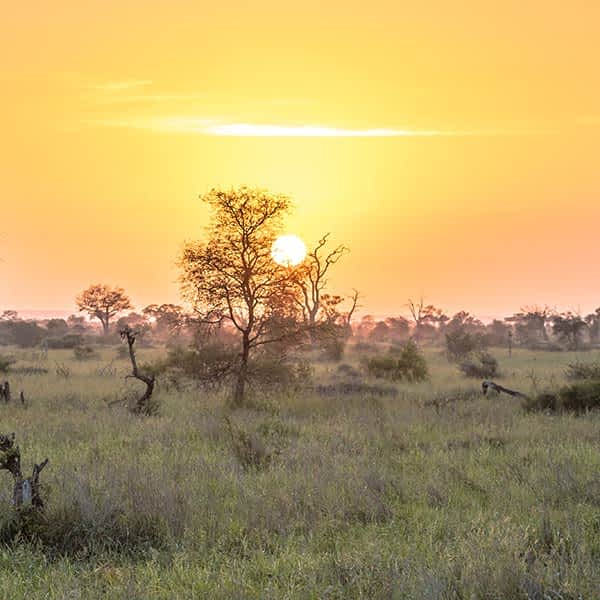The Big Five in the Serengeti
The Big Five define that ultimate African safari experience: seeing these impressive animals - lion, rhino, leopard, elephant and Cape buffalo - roaming freely in their own habitat is something you will never forget. You might wonder however, why those specific animals are part of the Big Five? Is a giraffe not large as well? Here is a factoid: the term ‘Big Five’ was coined by big game hunters and is not derived from the size of the animals. These animals proved to be the most difficult to hunt, mostly due to their ferocity when cornered.
Good job that these Big Five in the Serengeti are now only ‘shot’ by camera. Your guide and tracker will help you check the Big Five off your list. (And in the meantime: let’s not forget that other wildlife – like giraffes or hippos – are just as exciting to spot.)
Lion
King of the African savannah: seeing a pride of lions in their own habitat will leave you with an indelible memory. We have some good news for you: the Serengeti is home to some incredibly large prides of lions and they are fairly easy to spot. Lions live in a pride because they’re very social animals. In a group, the females hunt more than the males, but most will happily scavenge if they get the chance, because their favourite activity is snoozing under a tree: something they like to do for about 20 hours a day!
Leopard
They walk with an elegant grace and have an amazing coat: the leopard, also known as ‘The Prince of Darkness’. This is the most shy and elusive one of the Big Five. Leopards are excellent at playing hide and seek: if they don’t want to be seen, they can be perfectly camouflaged. In the Serengeti, you will be most likely to spot a leopard resting on a tree branch. The large branches of the sausage tree are their favourite spot. So never forget to look up: a leopard might be enjoying his lunch high up in a tree, so lions and other predators don’t bother him.
Buffalo
Not quite the lazy bush cow you might imagine: the buffalo is one of Africa’s most dangerous animals with very few predators. Lions might try to go for a calf, but are likely to pay the price later when an angry herd takes revenge. Buffalo need to drink every day, so they are often found at a waterhole. Although they can be notoriously bad tempered, especially when they’re injured, their wise gaze - as once described by a novelist: ‘They look at you like you owe them money’ - makes them thrilling to see. In the Serengeti, buffalo come in very healthy numbers: there’s a good chance you’ll see herds with over 1,000 or more of these thrilling animals.
African elephant
It’s the world's largest land animal, and seeing one in its natural habitat is simply thrilling. In the Serengeti, these grey giants roam the plains and disappear into the woodlands. Female elephants live in close-knit clans and family bonds can last for 50 years. Males often leave the clan after 12 years to roam singly or form bachelor herds. Elephants frequently visit waterholes close to lodges. They are peaceful when left alone, but if an elephant feels threatened, get out of the way. Nothing scarier than being chased by an animal that weighs 7,000 kilos (imagine the weight of seven stacked cars) and trumpets loudly…
Rhinoceros
The rhino is a pre-historic heavyweight, weighing in at 2,500 kilos. There are two types of rhinos in Africa: the black and white rhino. As you might expect, the white rhino is not white, but grey like the others. The name ‘white’ was misinterpreted after early Dutch settlers used the word ‘wijd’ (wide), referring to its broad lips. Unfortunately, the rhino has a horn that’s worth more than its weight in gold. Over the past several decades, the rhino population in the Serengeti ecosystem has suffered greatly due to poaching: rhino numbers decreased from 1,000 to less than 70 individuals. The female rhino only gives birth every five years, making the rhino one of the most challenging animals to spot in Serengeti National Park, but with an experienced guide by your side, you might get lucky!
Other wildlife in the Serengeti
The Serengeti has a great variety of animals, because it’s a unique transition area. The distinct changeover from rich flat soils in the south, to the poor hilly soils in the north, leads to a great diversity of vegetation and habitats across the park.
A unique habitat is the riverine forests: a favourite spot for hippos and crocodiles. Other common animals are the long-neck giraffes, many other ungulates (hooved animals) such as the eland, zebra, topi, kongoni, impala and Grant's gazelle are resident at any time of the year. As said, all three big cats are easily seen. Lions are everywhere and are often found on a kill. Cheetahs are very common on the south-eastern plains, while leopards can typically be found lazing in one of the big trees along the Seronera River. Hyenas are common, wild dogs, unfortunately, are rare. Read more about other wildlife.
Always on the fly: birdlife in Serengeti National Park
If you’re not a birdwatcher at heart, there’s a good chance you’ll become one after visiting the Serengeti. With more than 500 bird species recorded, this is a birdlife paradise. Most guides will happily point out all the unique species in this area, like the bright green and yellow-coloured Fischer’s Lovebird, or the Kuri bustard with its impressive white beard. The Serengeti-Mara ecosystem is one of Africa’s Endemic Bird Areas (land important for habitat-based bird conservation), and also hosts five bird species found nowhere else, half of which are confined to the Tanzanian portion of the ecosystem. Read more about birds in Serengeti.
Best time for bird watching
Luckily, bird watching in the Serengeti is good year-round, but at its very best between early November and late April. Not only is this when European and North African migratory birds are present, but it is also nesting time for resident species. This makes it easy to spot birds in their exciting breeding plumage. Read more about the best time to visit the Serengeti.
Small talk: insects in the Serengeti
We have good news for anyone who’s not a big fan of stinging and biting insects (who is?): the numbers of these insects are low in the Serengeti compared to North America and Europe. However, the diversity of other insects is phenomenally higher in this park. Many of these little creatures play a critical role in the ecosystem of the entire area, and many guides will enthusiastically explain more about the importance of insects. Five of these critical insect groups are dung beetles, grasshoppers, termites, butterflies, moths, and ants.
Further reading

